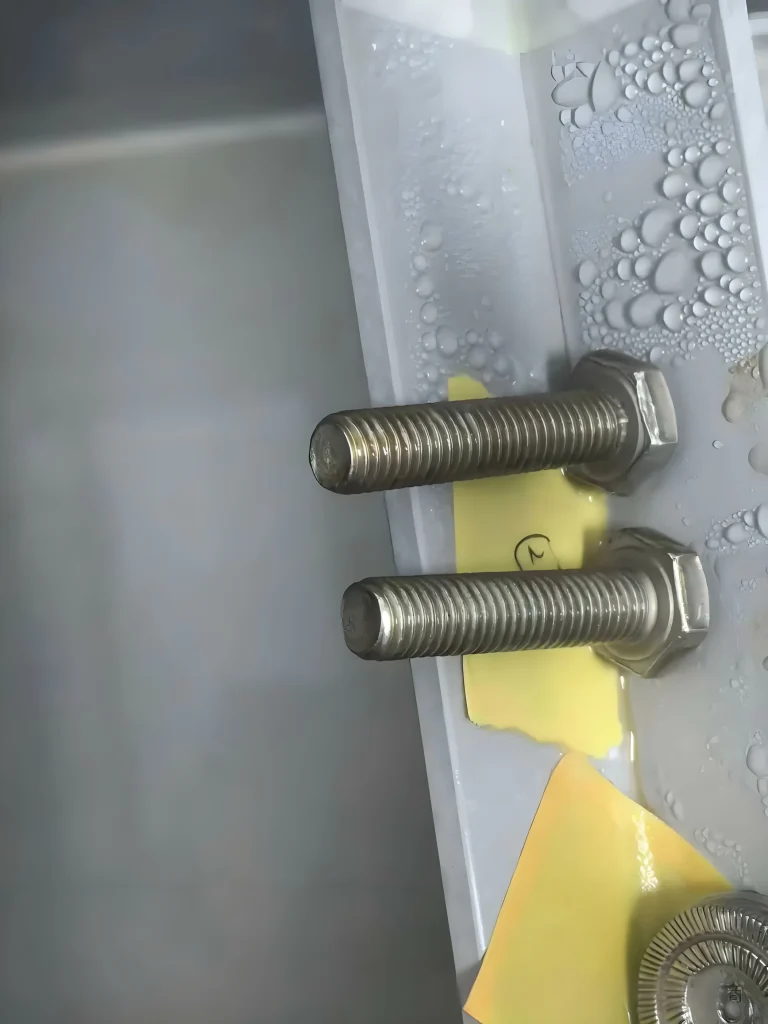1.What Is Metal Passivation and Why It Matters
In harsh industrial or marine environments, untreated metal surfaces rapidly deteriorate. To combat this, passivate aluminum stainless steel components using specialized surface treatments that form a thin, inert oxide layer. This passivation layer blocks corrosion, enhances chemical resistance, and prevents contamination. Whether you’re protecting 6061 T6 aluminum or stainless steel welds, proper passivation extends component life and ensures compliance with global performance and quality standards.
2.Why Passivation Matters in Modern Manufacturing
Passivation is more than just a finishing touch—it’s a critical process for extending metal lifespan. Whether you’re working with passivated aluminum or stainless steel, untreated surfaces are vulnerable to corrosion, especially in high-humidity or marine environments.
3.What Does It Mean When Metal Is Passivated?
Passivation refers to the chemical treatment of metals—especially stainless steel and aluminum—to form a stable passivation layer that protects against corrosion. This passive film, often composed of chromium oxide or aluminum oxide, prevents rust and contamination.
4.What Is the Difference Between Passivated and Non-Passivated Stainless Steel?
Passivated stainless steel has a clean, inert surface with improved resistance to oxidation. In contrast, non-passivated stainless may retain iron particles or contaminants that can initiate corrosion.
Key takeaway: If your components face moisture or salt, passivation is not optional.
5.Aluminum vs. Stainless Steel Passivation: Which Needs It More?
Both materials benefit—but for different reasons. Aluminum passivation enhances its naturally occurring oxide film. Stainless steel passivation, especially after welding, removes free iron and restores chromium-rich surfaces.
Use case: In chemical processing or food-grade tanks, stainless steel passivation is often a compliance requirement.
6.How to Identify a Passivated Aluminum Surface
A passivated aluminum surface is typically smooth, uniform in tone, and slightly matte. It will resist fingerprinting and discoloration better than untreated aluminum. Surface testing can confirm the presence of an aluminum passivation layer.
7.Table: Typical Passivation Needs by Alloy Type
| Metal Type | Common Alloys | Passivation Required | Process Notes |
| Stainless Steel | 304, 316, 316L | Yes | Use nitric or citric acid solutions |
| Aluminum | 6061 T6, 7075 | Yes | Alkaline cleaning + acid desmutting |
| Carbon Steel | Mild steel, A36 | Yes (for special use) | Zinc phosphate or chromate conversion |
8.How Does the Passivation Process Work? (Step-by-Step)
- Degreasing: Eliminates oils and machining residue.
- Acid Pickling or Desmutting: Removes surface oxides and contaminants.
- Passivation Treatment: Forms a protective oxide layer via nitric or citric acid baths.
- Neutralization & Drying: Final rinsing with DI water and controlled drying to prevent flash rust.
- Compliance: All Welleshaft processes follow ASTM A967, AMS 2700, and ISO 16048
9.Why Do Stainless Steel and Aluminum Corrode Together?
Galvanic corrosion occurs when aluminum and stainless steel are in electrical contact in the presence of an electrolyte. The aluminum acts as the anode and corrodes faster.
✅ Solution: Isolate the metals and ensure both are properly passivated.
10.Does Stainless React with Aluminium? How to Prevent It
Yes, especially in outdoor or marine applications. Using passivated aluminum and adding insulating barriers like nylon washers helps prevent this aluminum stainless steel reaction. Welleshaft provides OEM passivation services with corrosion testing included.
11.What Does Weld Passivation Do?
Welded areas are vulnerable. Heat-affected zones often lose their protective oxide film. Weld passivation removes iron oxides and rebuilds a passive layer, preventing rust from forming along the weld seam.
Popular in: pharmaceutical piping, food-grade tanks, and automotive exhaust systems.
12.Is Passivation the Same as Anodizing for Aluminum?
No. While both enhance corrosion resistance, passivation is chemical, and anodizing is electrochemical. Passivated aluminum remains conductive, while anodizing creates a thick oxide that may be decorative or non-conductive.
13.How Does Passivation Improve Corrosion Resistance in Metals?
By forming a thin, dense oxide layer, passivation prevents oxygen and moisture from reaching the underlying metal. This reduces rust, extends product life, and improves performance in corrosive environments.
Use in: marine, automotive, aerospace, and medical industries.
14.Real-World Case Study: Marine Brackets in 6061 Aluminum
A European client shipping aluminum brackets to Asia faced surface pitting within 3 months of deployment. Welleshaft applied a customized alkaline cleaning and nitric passivation on 6061 T6 aluminum. Result: 300% improvement in salt spray resistance, verified via ASTM B117.
15.Application Scenarios: Where Passivation Adds Value
1.Food-grade stainless piping and tanks
2.Automotive exhaust manifolds and clamps
3.Marine-grade aluminum frames and brackets
4.Medical surgical instruments
5.Cleanroom and semiconductor components
Welleshaft tailors each passivation process based on your industry, material grade, and end-use environment.
16.Technical Certifications & Equipment at Welleshaft
1.ISO 9001, ISO 14001, IATF 16949 certified workshops
2.In-house acid treatment tanks, DI water systems, and fume extractors
3.XRF analyzers for elemental validation
4.Salt spray chambers for corrosion simulation testing
5.Expert team with 10+ years of metal finishing experience
17.Why Choose Welleshaft for Passivation Services?
At Welleshaft, we offer full-spectrum metal passivation for stainless steel, aluminum, and alloy components, including:
CNC machined parts
Welded pressure vessels
Architectural hardware
Custom OEM components
18.People Also Ask
(1)What happens if stainless steel is not passivated?
It becomes prone to surface rust, especially in moist or chloride-rich environments.
(2)Can aluminum be passivated like stainless steel?
Yes, though the chemistry differs. Aluminum passivation involves desmutting and acid baths.
(3)When is passivation of stainless steel required?
After welding, machining, or mechanical damage—especially in regulated industries.
(4)Is passivation necessary for 316L stainless steel?
Yes. Despite its molybdenum content, 316L benefits from post-fabrication passivation.
(5)How often should metal parts be re-passivated?
Depends on exposure. For marine/chemical exposure, every 6–12 months is recommended.
(6)How to choose a metal passivation service provider?
Look for industry certifications, in-house inspection, and corrosion test documentation.
19.Book a Certified Passivation Service Now
Let Welleshaft protect your components from corrosion, contamination, and compliance failures. From passivation of 6061 T6 aluminum to welded stainless steel pipes, we handle it all—reliably and precisely.
Written by a surface finishing engineer at Welleshaft. With 7+ years of industry experience, our team provides expert solutions in metal passivation, CNC machining, and advanced corrosion control.

